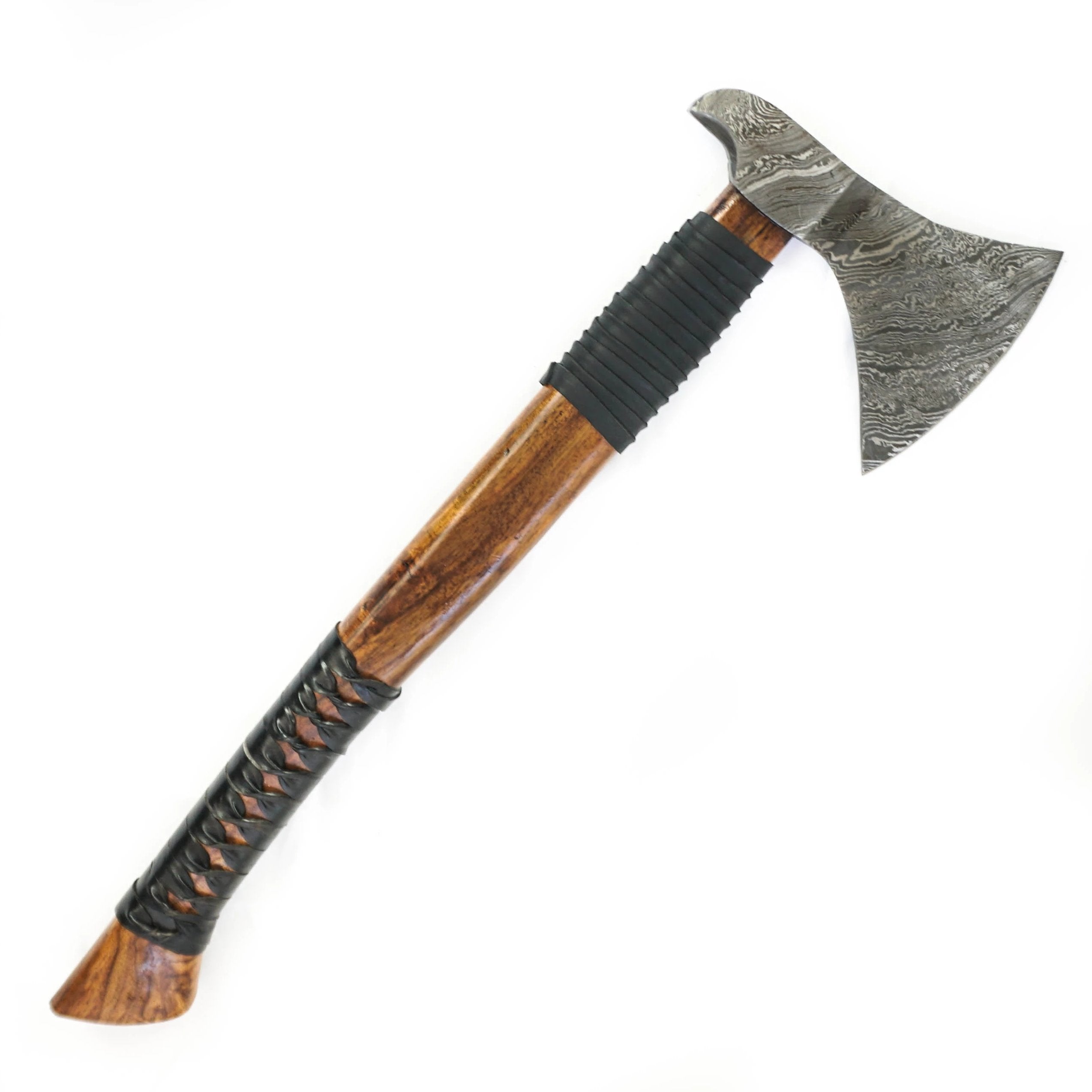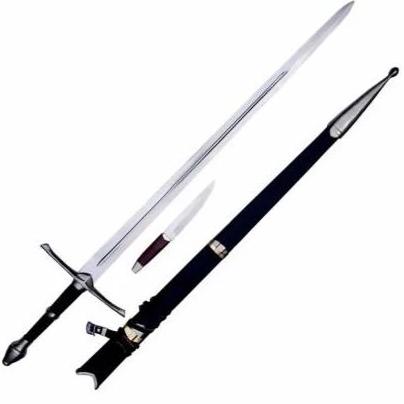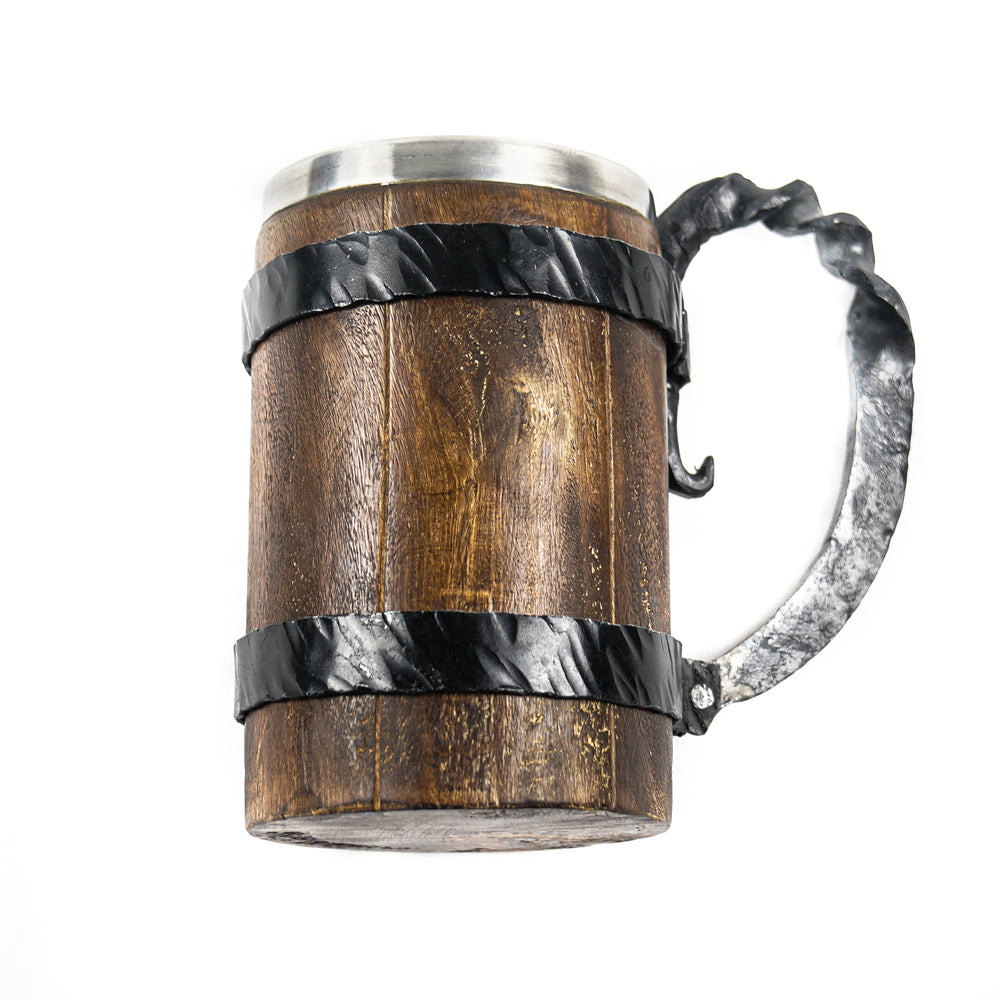Falchion Sword – 41” | High Carbon Damascus Steel – 352 Layers
The Falchion sword is a fascinating blend of form and function, known for its broad, cleaver-like blade and origins rooted in both European and Eastern sword traditions. Emerging in the 13th and 14th centuries, falchions were among the most valuable and coveted weapons of their time—often associated with wealth and high status. Their design was heavily influenced by the curved Turko-Mongol sabers that spread into Europe, and most depictions resemble the großes Messer, a large, single-edged sword favored by knights and mercenaries.
This modern falchion captures the essence of the original—delivering power, weight, and elegance in a beautifully forged package.
Blade Material: Pattern-Welded Damascus Steel – 352 Layers
Crafted from 11 pieces of steel—6 pieces of carbon steel (#43 & #40) and 5 pieces of 1095 high carbon steel—this blade is folded five times to produce a mesmerizing 352-layer Damascus pattern. The steel offers the perfect mix of hardness and flexibility, with a Rockwell Hardness rating of 55–56 HRC, ensuring it holds a razor-sharp edge while remaining resilient in impact-heavy situations.
Specifications:
-
Sword Type: Falchion – European Single-Edged Sword
-
Overall Length: 41"
-
Blade Material: High Carbon Damascus Steel
-
352 Layers: 5 Folds of 11 Steel Pieces
-
-
Rockwell Hardness: 55–56 HRC
-
Tang: Full Tang Construction for Strength and Balance
-
Handle Material: Solid Wood with Damascus Steel Bolsters
-
Sheath: Premium Leather Sheath Included
A bold and powerful weapon with deep historical roots, this Damascus Steel Falchion is ideal for collectors, re-enactors, or anyone seeking a statement piece that blends medieval might with masterful modern craftsmanship.

















